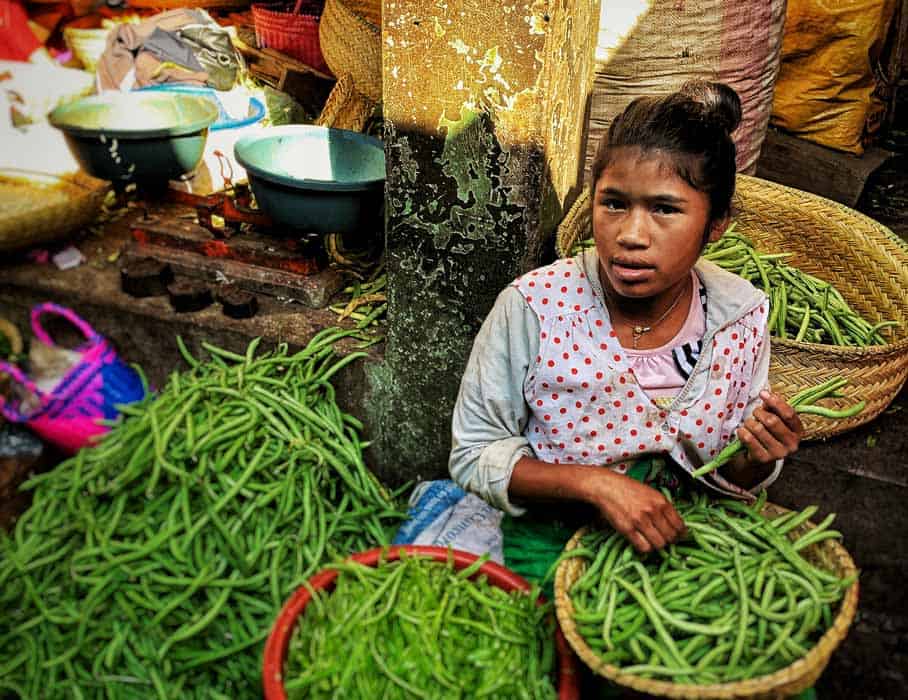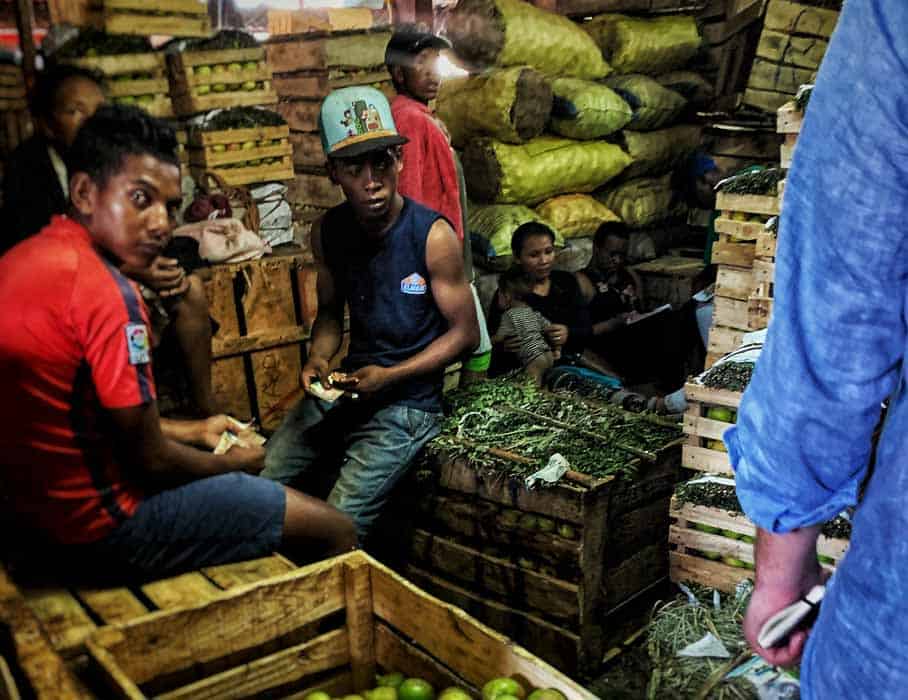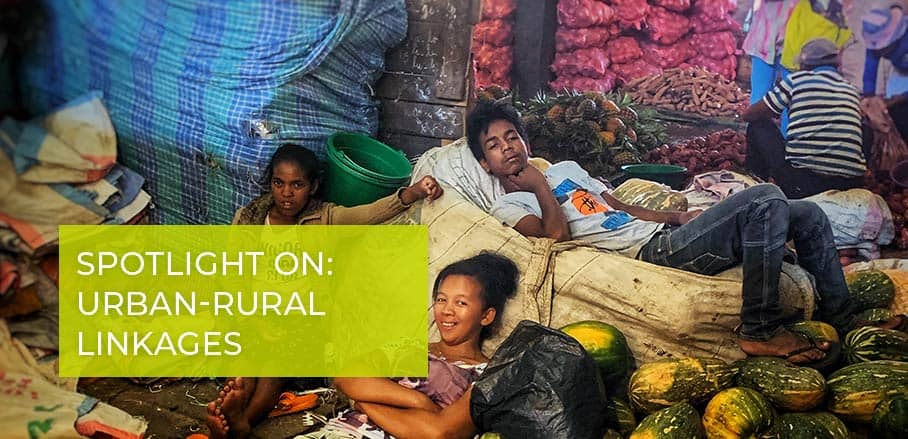Building Resilience to COVID-19 in City Region Food Systems
City region food systems are affected by diverse shocks such as a pandemic. It is therefore essential that cities develop respective resilience strategies, argue Isabella Trapani, Guido Santini, and Roman Malec from the Food and Agriculture Organization of the United Nations (FAO).
The Relevance of City Region Food Systems
The impacts of climate change and emerging public health issues are disrupting food systems all over the world, affecting food and nutrition security of millions of people. In a rapidly urbanising world where 70 per cent of global food supply is consumed in urban areas, city region food systems are especially affected by shocks and stresses. In addition to climate events such as heat waves, droughts, floods, and storms, the recent COVID-19 pandemic demonstrates how sudden shocks can severely disrupt the entire food value chain. Despite these threats, resilient and sustainable food systems are often not on the agenda of local governments.
The Impact of the COVID-19 Pandemic on Urban Food Systems
A survey by the FAO revealed the diverse impacts of the COVID-19 pandemic on local food systems, from production to consumption. Movement and transport restrictions led to shortages in agricultural labour and inputs, affecting both food production and processing. Limited mobility as well as restricted access to and operation of markets and retail disrupted food supply and increased food loss and waste, especially for perishable products.
Remote areas dependent on food imports were especially affected by food shortages due to border closures and limited transportation. Moreover, restaurants, canteens, markets, and street traders were shut down in many cities. Many producers and agri-food businesses were not able to recover from the lockdown restrictions. Confined to their area, urban dwellers dependent on local markets and informal traders in their neighbourhoods experienced limited access to food. Food supply challenges and panic buying led to spikes in food prices in many parts of the world.
In addition, the most vulnerable population dependent on school meals and food banks suffered from school closures and disruptions in food relief programmes. While income losses and unemployment led to significant increases in demand for food relief, food banks received fewer donations and movement restrictions limited support by volunteers.
Adopting Diverse Approaches to Mitigate the Impacts of the Pandemic: Examples from Three City Regions
To cope with the food system challenges caused by the pandemic, city regions have responded in various ways. The regional government of Antananarivo, Madagascar, prioritised strengthening urban-rural linkages through better connecting producers with consumers. Linking the private sector with smallholder farmers to process and market perishable products such as meat, fish, dairy, and eggs ensured more effective distribution and reduced food loss and waste. In view of high market restrictions, open-air markets were facilitated, encouraging the sale of food produced in the city region.

Antananarivo Analakely market © Guido Santini
Already before the pandemic, a city region food system strategy was developed for Antananarivo to build resilience towards climate shocks. This territorial approach included mapping food flows and food system stakeholders, identifying food needs as well as potential production areas and capacities within the city region. The results of this analysis now inform the design and implementation of a ‘post COVID-19 strategy’ for enhanced resilience, linking responses to climate and epidemic vulnerabilities.
Although the government of Victoria reacted to the sudden increase in food insecurity in Melbourne, Australia with emergency food relief for vulnerable citizens, civil society stood at the forefront of the emergency response. An alliance of social enterprises, the Moving Feast collective, provided food boxes, emergency meals, and gardening kits. Increased engagement in urban agriculture within local communities provided additional produce for food relief. Through an Open Food Network, farmers and farmers markets were able to connect to consumers online. Adopting a territorial perspective, the city currently aims to increase their understanding of vulnerabilities in the food system and identify interventions for strengthened resilience. While peri-urban food production is already sufficient to cover 40 per cent of urban demand, further increasing local production and consumption can reduce food system vulnerabilities through diversified food supply and value chains.
The City of Quito, Ecuador, was able to enhance their capacity to respond to the pandemic by mobilising food system stakeholders through their multi-stakeholder governance platform Quito Agrifood Pact (PAQ). This allowed for collaborative responses to disruptions through public private partnerships. The city’s food system and vulnerability analysis, which included mapping out local markets and vulnerable communities, increased the effective distribution of emergency food relief to vulnerable households. In addition, the city expanded municipal support for urban and peri-urban food production. The high production capacity of the city’s urban and peri-urban gardens ensured that urban farmers could not only supply their own households with fresh produce but also sell the surplus directly in their neighbourhoods, or via short supply channels. To alleviate the impacts of movement restrictions, urban farmer networks facilitated direct food purchases from local farms through home deliveries. For increased resilience and sustainability, the municipality adopted an Action Plan for a Sustainable Food System and works on the development of a municipal resilience strategy.
How to Make City Region Food Systems Resilient to Multiple Shocks and Stresses?
Building resilient food systems requires sustainable planning at territorial level. Better understanding their city region food system, its main actors, and its vulnerabilities and exposure to shocks and stresses, allows the local and regional governments of the Antananarivo, Melbourne, and Quito to make informed decisions, plan interventions, and prioritise actions that increase their food system resilience. Diversifying food sources and value chains, including boosting local food production, promoting shorter food supply chains, and strengthening urban-rural linkages can contribute to resilience building of city region food systems. Moreover, fostering multi-stakeholder collaboration for inclusive governance is another key element to build resilience to multiple shocks and stresses.
Nevertheless, improving local capacities and funding remains a crucial task for many cities. Due to the often-limited mandate of cities, as in the case of Antananarivo and Melbourne, food system interventions were mainly led by regional governments. However, it is crucial to ensure better coordination between local, regional, and national efforts to produce more effective and efficient results. Lastly, many pandemic responses have focused on targeted interventions in the downstream food value chain, such as emergency food relief, food distribution, and market facilitation.

Antananarivo Analakely market © Guido Santini
Building on these responses, it remains important to promote diverse and systemic solutions across the entire food value chain and to adopt a multi-risk approach for resilience towards multiple shocks and stresses beyond the pandemic. Measures can include climate and disaster risk governance and information systems, early warning systems, risk transfer mechanisms such as social protection and insurance, risk-sensitive agricultural practices and technologies, emergency preparedness, early action and response, climate risk proofing of grey infrastructure along the food value chain, nature-based solutions, food loss and waste reduction, and climate friendly and sustainable diets.
